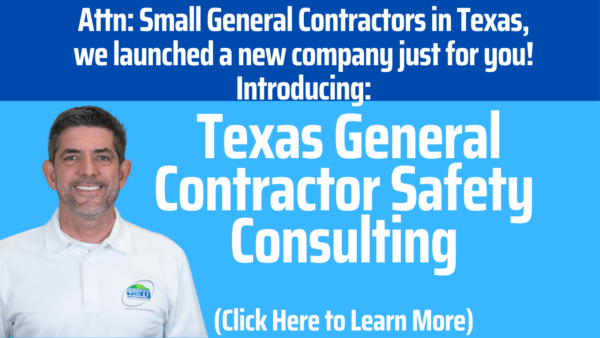This blog post is designed to cover all of the basic things that general contractors need to know about OSHA compliance, and most importantly how OSHA views and regulates the relationship between general contractor and subcontractor safety compliance.
We put this together because we’ve found that there’s lots of misunderstandings among GC’s about how all of this works.
I’d like to start off by talking a little about some current OSHA enforcement trends, and then some background information about what OSHA requires and expects from general contractors. And then we’ll go into the potential consequences of not meeting those requirements, and then end off by talking about how our company can help you manage these responsibilities.
OSHA Inspections & Enforcement:
To begin with, OSHA enforcement efforts are currently at historically high levels and will continue to accelerate under the new Biden administration which is strongly committed to workplace safety.
OSHA is specifically targeting construction companies due to the fact that the construction industry historically has more serious injuries and fatalities than any other industry.
Construction companies, especially small to medium sized ones, generally operate way out of compliance. That’s just a fact and OSHA knows it. And that’s why 60% of all OSHA inspections are construction related, and why OSHA issues fines in about 90% of these inspections. On average they’ll find anywhere between 3 to 8 serious violations, and each of these serious violations carries a mandatory $4,000-7,000 fine per violation (these fines are scheduled to rise to as high as $13,653 each in 2016), for a total average fine of anywhere between $15,000-$50,000 per inspection. But it could be much higher if they find any Willful or Repeat violations, which carry mandatory fines between $70,000 and $136,000+ each!
Keep in mind that they can fine you not only for physical violations that they see at the job site, like one of your subcontractors walking across the roof without wearing fall protection for example, but also for administrative violations such as not having all of the required written programs or record keeping requirements. OSHA inspector routinely drive around town looking for violations, and not only that, but 20% of all inspections are actually triggered by employee complaints and OSHA is mandated to respond to every one of these complaints. These compliant can be filed by your direct employees or even subcontractor employees, and that includes current employees as well as ones that you may have laid off or fired 6 months ago. OSHA is mandated to respond to every single one of these.
Always be prepared for the possibility of an OSHA inspection!
OSHA’s Controlling Employer Mandate for General Contractors
So let’s talk a little bit about what OSHA expects of general contractors. What’s most important to understand is that OSHA considers the GC the “controlling employer, on multi employer job sites.” In other words, OSHA regulations state that the GC is the one who controls their job sites (ie: the controlling employer), and is therefore responsible and liable for not only the job site’s safety compliance, but also for the safety compliance of all of the subcontractor’s that are working there (in other words, the multi employers).
So what exactly does this mean? The main issue is that the GC must make what OSHA calls “reasonable efforts” to ensure that the job site is safe. Well how do you do that? It basically boils down to 4 main things: 1) the GC must have a written safety program, 2) must have employees who are trained to manage, maintain and enforce that program 3) must routinely inspect the site to identify and then correct any safety hazards (whether caused by the GC or subcontractor), and 4) coordinate with subcontractors to correct any identified violations. In other words, the GC must keep the site safe and in compliance but also enforce compliance with their subcontractors. That’s just the way it is.
So what happens if a GC fails to do all of these things? At the end of the day, what’s important to know is that OSHA can fine GCs for any violations caused by their subcontractors. In fact, they can fine both the subcontractor as well as the GC for the same violations. In other words, they can double dip.
General Contractor Civil Liabilities When It Comes To Safety
In addition, if a subcontractor’s employee is injured, or god forbid, killed, then that employee or their family can actually sue the GC for damages. And keep in mind that your WC insurance only covers your direct employees, not subcontractor employees. So as you can see, OSHA laws put a lot of responsibility and liability on you as the General Contractor. And again, that includes both regulatory fines as well as additional civil liability.
Now the good news is that you can protect yourself from these liabilities if you can prove that you’re meeting OSHA’s Controlling Employer mandate by making a “reasonable effort” to keep the job site safe. And that goes back to the 4 things we talked about before. So if you’re actually doing all of these things on a regular basis, you can defend yourself, but if you’re not, then you’re totally exposed to all of those liabilities that I just talked about.
What Now?
Let’s end off by talking briefly about how we can help your company manage these construction safety responsibilities. We begin by conducting a thorough audit of your company by comparing what you currently have in place vs. what OSHA requires. This includes an inspection of one or more of your job sites, as well as a review of all of your written safety programs and records. Once we’ve completed the audit, we’ll create a detailed report which identifies any gaps, and then prioritizes those gaps into a prioritized action plan that is designed to bring you into full compliance and remain in compliance. In addition, the report will use these gaps to estimate what OSHA would have fined you if they found the same things, instead of us, so you’ll have a good idea of what your OSHA fine liability actually is.
And then we’ll follow that up by creating a 12 month compliance calendar which will map out implementation of all of the corrective actions, as well as all of the monthly safety training requirements. And this includes actually writing your entire safety manual to meet all of OSHA’s requirements, and then we’ll begin training your superintendents, and subcontractors too if you want, on all required safety training. This training will essentially teach your superintendents on how to eye-ball safety violations and do all of the things we talked about before, like how to inspect and ensure that your job sites are safe, and also how to work with your subcontractors to help bring them into compliance. And we’ll back that up by conducting our own monthly inspections on as many job sites as you want, which will include ongoing monthly safety training sessions, and then create detailed reports that you can use to help document that you are consistently meeting OSHA’s requirement of routinely inspecting your job sites.
Learn more about how we help Texas general contractors manage OSHA compliance by calling 512-457-0374 or Click Here to Schedule Your Free Consultation
Berg Compliance Solutions offers turnkey programs to help businesses get peace of mind knowing they are fully compliant and positioned for success.

